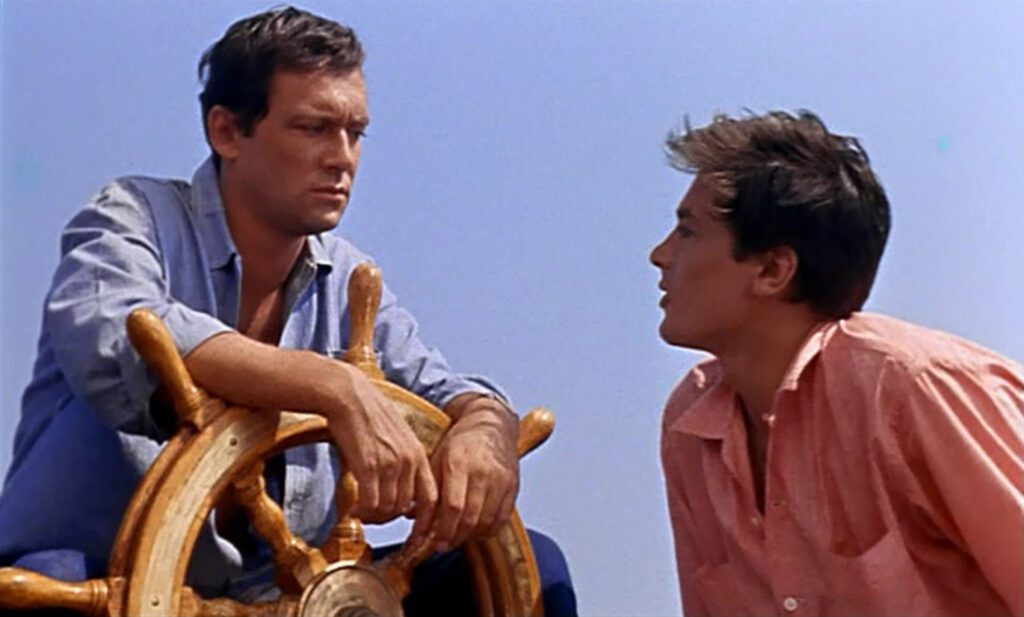
Plein soleil
1960, directed by René Clément
The opening scene of Plein soleil transitions fairly seamlessly from an outdoor café to the streets of Rome where Tom Ripley and Philippe Greenleaf head back to their hotel, buying the cane off a blind man as a joke, an arrogant way to make light of Philippe’s superior wealth. Their conversation seems to flow uninterrupted between the café and the streets, and the lighting is so carefully handled that it’s hard to notice that the scene jumps directly from broad daylight to nighttime. After the cut we see the lower part of a colonnade, and not until the perspective widens does the night become evident. This discrepancy is not likely to be a continuity error, because it’s too appropriate. The sudden darkness coincides with Tom and Philippe taking turns stepping into the shoes, figuratively speaking, of the blind man.
This episode with the blind man’s cane foretells the story to come, as Tom will spend most of the movie in Philippe’s shoes, both literally and figuratively, even sharing a woman just as they both make out with the woman in the carriage. Just as the two friends taste the experience of blindness, Tom will taste the experience of wealth. This symmetry implies an analogy between blindness and wealth, which is strongly borne out in Plein soleil. Philippe and Freddy are playboys who view Tom with a casual contempt that blinds them to his merits, and underestimating him will cost both their lives. Philippe is likewise blind to Marge, unappreciative of her love, and Freddy is so blind to the women he dates that he can’t even recall their names. Once Tom takes over Philippe’s persona, and especially when he’s set to marry Marge and assume his friend’s fortune, he too is blinded – to life itself and to his own guilt, which is so aptly materialized in the unseen corpse trailing him below sea level.
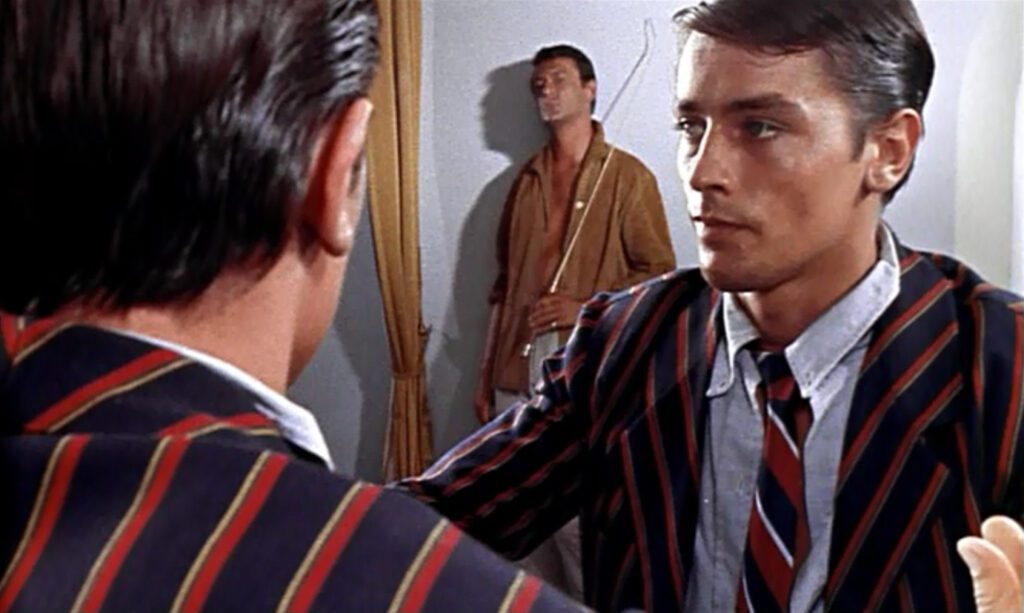
Plein soleil‘s critique of wealth is hard to miss, and it runs deep. The idea that the wealthy are blind to the deprivation around them is nothing new, and the movie doesn’t belabor this point, although we do see glimpses of working class Italians who look with well earned disdain on the main characters, who are not only rich but also foreign, using Italy as a playground. More to the point is how shockingly ungrateful the wealthy are for their comforts and privileges – to such an extent that they’re perversely fascinated by death. Philippe is so entertained by the idea of Tom killing him that he treats it as a game. For a long time Tom has been ministering to his rich friend, doing everything asked of him, and it’s not far-fetched to say that stabbing him and throwing him overboard is consistent with what he’s been doing all along – Philippe all but invites Tom to kill him.
Implicit in Plein soleil is a point that will be made again later in Kubrick’s Eyes Wide Shut, that the world of the ultra-rich is closed to outsiders, even more than commonly perceived. No matter how clever or talented Tom is, and regardless of his friendship with Philippe, he is simply not welcome in Philippe’s world. Even the extraordinary circumstances of the plot do not gain him admission; it’s as if outsiders are fated to stay outside. Philippe and Freddy both inherit their wealth; their circle is not a meritocracy.
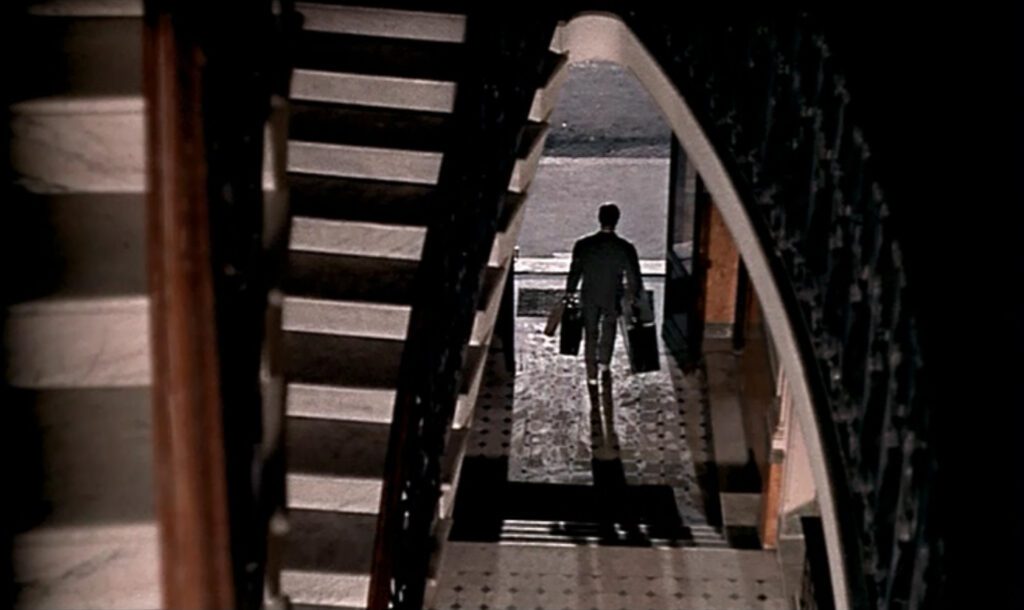
This critique is not limited to the wealthy themselves, it also extends to people like Tom Ripley who aspire to obscene wealth. At first he seeks no more than the $5000 Tom’s father has promised for his son’s return, but after failing his assignment he sets his sights on the whole fortune. This leap of ambition is the original sin that will lead to two murders and destroy Tom’s life.
Neither the subject of Plein soleil, nor its particular arguments about the blindness of wealth, the rigidity of inequality, and the corruption of greed are particularly unique, although they’re made vivid through an exciting story with memorable acting and a fitting surprise at the end. What distinguishes the movie is the inspired subtlety of its mise-en-scène, how the external world reflects and amplifies the inner drama, like the odd turn to darkness that reifies the blindness that Tom and Philippe so flippantly try out. Everyone knows that the artificial settings in a movie like The Cabinet of Dr. Caligari express its protagonist’s distorted point of view, but in Plein soleil the world looks so natural that it’s easy to miss the artifice that welds it to the drama.
This strange concordance between outer world and inner states is most visible at Philippe’s murder. The sea is calm until Tom stabs Philippe in the heart, whereupon the wind picks up and waves throw the boat into chaos. Jovial conversation turns into the frenzied work of sinking the body, and the weather changes accordingly. Like the switch to darkness back in Rome, it’s a fitting coincidence that externalizes the turmoil Tom must feel as he kills his friend.
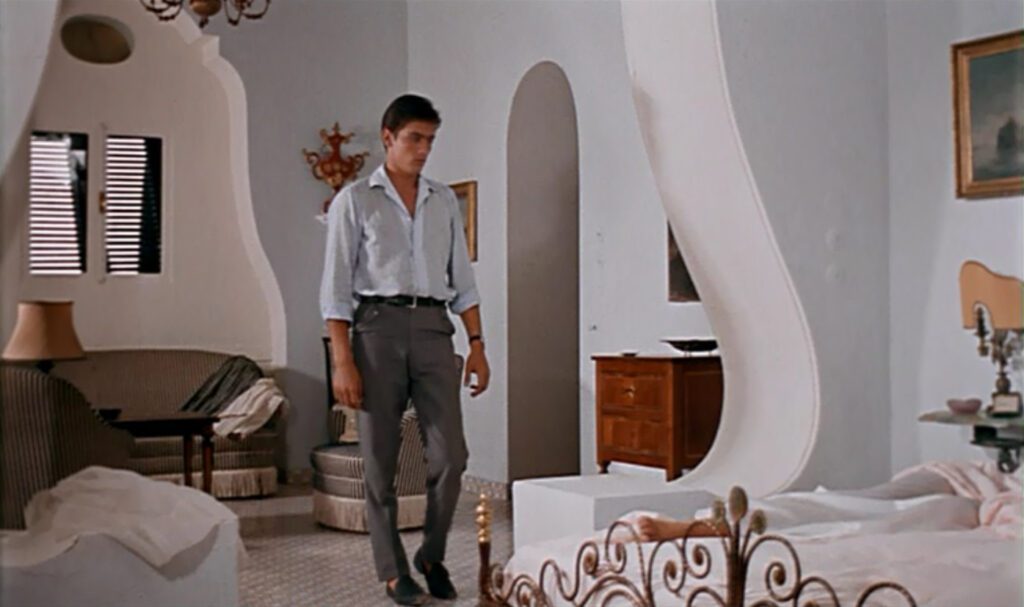
At the second murder, Freddy’s limp body is reflected in a plucked chicken that flops on the floor beside him. More interesting though is the light melody that arises suddenly as Tom looks outside to see schoolchildren playing. Again the outer world comments on the inner drama, reminding Tom of the innocence he’s left behind forever.
From the first murder until Tom’s final moment of triumph, we usually see him in some form of action: preparing his next step, covering his tracks, working to get rid of Freddy or to win Marge. In Naples, however, when Marge writes to Philippe, Tom has nothing to do. As he walks aimlessly through a fishmarket, dead sea creatures of increasing grotesquery stare back at him, culminating in the monstrous faces of stingrays and a chopped fish head. These freakish life-forms fill the empty minutes like demons from a medieval painting tormenting an idle sinner, reminding Tom of another dead creature he left under the sea. Punctuating the scene is a large iron scale, a symbol of justice.
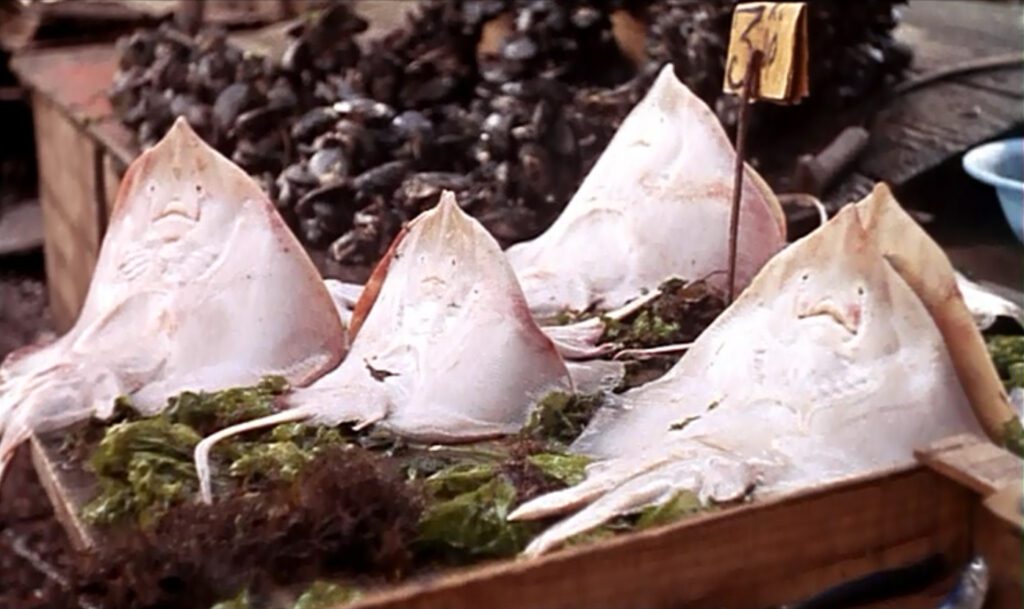
Not only do the settings themselves reflect what’s going on underneath, but the confusion of settings as Tom shuttles from one place to another reflects his insecurity while he runs just a step or two ahead of the law. After killing Philippe he goes from Mongibello to Rome to Mongibello to Naples to Rome to Mongibello to Rome to Mongibello. Even within Rome he changes lodgings three times, from the Albergo Paradiso to Hotel Excelsior to an apartment on Via Savoia and back to the Paradiso. All this geographic instability mirrors his own instability as he switches back and forth from one persona to the other, between Tom and Philippe.
As Tom’s plans approach fruition, his jubilation too finds expression in his surroundings. As he returns to Mongibello, excited to see Marge and win her heart, a festival brings the town to life. Fireworks light up the port, and a parade passes Tom on his way up to Marge’s apartment. Once everything is settled – Marge will inherit Philippe’s fortune, she has the money from the bank account, all suspicion for the murders seems to be diverted, and Tom’s union with Marge feels secure – he can relax with a brandy on a beach where the tranquil weather and postcard-like beauty externalize his satisfaction. Finally he’s reached his paradise.
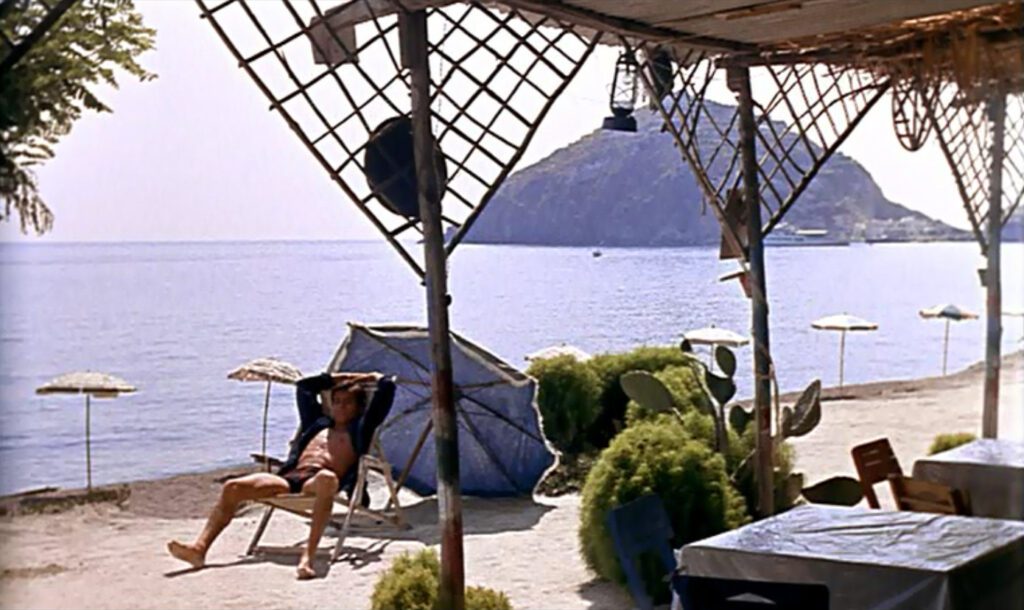
Little does he know that just inside the restaurant an opposite picture awaits him. We never see him find out about Philippe’s decaying body with the angry-looking hand poking through the canvas, but in the kitchen where the police are hiding, an open oven burns with hellfire. With this we know all we need to know, and the story closes.
The consistent correlation between settings and emotions makes Plein soleil operatic. The visuals assume music’s role, reflecting the characters’ inner experience and giving resonance to the drama. The technique also fits the movie’s argument. If environment and drama are so closely intertwined, the audience should feel more acutely the almost inevitable bond between wealth and corruption.
CONNECTIONS:
The Cabinet of Dr. Caligari – Man kills his friend with insinuation of “asking for it”; settings mirror the drama
L’avventura – Yacht trip in Tyrrhenian Sea; echoing incidents; mise-en-scène tied to drama
Knife in the Water – Two competing men and a woman on a yacht; conflict comes to head with knife
Red Desert – External world reflects internal states
The Passenger – Man taking another’s identity
Eyes Wide Shut – Similarity of Alain Delon and Tom Cruise, each trying to penetrate the closed world of the ultra-wealthy